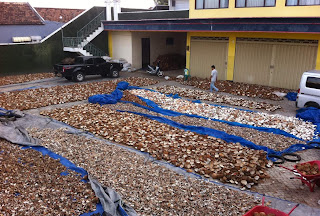Dried sections of the meat of the coconuts the kernel of the fruit of the coco palm. Copra is valued for the coconut oil extracted from it and for the resulting residue, coconut-oil cake, which is used mostly for livestock feed
Making copra – removing the shell, breaking up, drying – is usually done where the coconut palms grow. Copra can be made by smoke drying, sun drying, or kiln drying. Sun drying requires little more than racks and sufficient sunlight. Halved nuts are drained of water, and left with the meat facing the sky; they can be washed to remove mold creating contaminants
Exposing the kernels to the air and sun was the earliest method of drying and is still extensively followed; it gives a good quality white copra.
We have Grade A, B and C of Coconut Copra. The best quality is Grade A with natural dried . All copra made from dark and brown coconut.
Please find bellow the detail :
Grade A
Moisture Contains : 1% - 3%
FFA Contain : 0.4% - 1%
Oil Content : 70% Min
No Fungus Content
Grade B
Moisture Contains : 3% - 6%
FFA Contain : 0.4% - 1%
Oil Content : 61% Min
No Fungus Content
Moisture Contains : 6% - 10%
FFA Contain : 0.4% - 1%
Oil Content : 55% Min
No Fungus Content
Capacity : 100MT/Month
Capacity : 100MT/Month


No comments:
Post a Comment